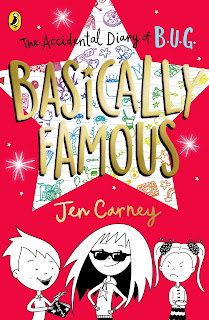It was a pleasure to be asked to join the blog tour for Ian Eagleton's latest book and I accepted the offer immediately. I'm a huge fan of his previous work, both as a writer and as an educator, and my admiration grew even further after reading The Woodcutter and the Snow Prince. It's genuinely beautiful; a modern, inclusive, festive fairy tale overflowing with empathy. It's a book full of love and a book that needs to be celebrated. Over the past week I've shared it with three different classes, from Year One to Year Five, and they've all adored it.
Oh, and Davide Ortu's artwork...what can I say? I knew that Ian would find it a challenge when I asked him to write about his favourite illustration because they're all so wonderful, and so I think it's only fair that he's bent the rules and written about four. Enjoy!
Silent Woods and Mirror-Like Lakes: My Favourite Illustration
by Ian Eagleton
Now, before I begin, I have to tell you that picking one
favourite illustration from The Woodcutter and the Snow Prince has been
very, very difficult!
I could have chosen the endpapers, which I adore. I love
seeing maps in picture books and Davide Ortu’s ones are magical! Don’t you just
want to explore this strange, wintry kingdom!
I could have chosen the four illustrations where Kai, the
lonely woodcutter, is sat at home waiting for his Snow Prince. Davide has
imbued Kai with such sadness and confusion that my heart breaks for him. The
framing of each of these illustrations is interesting too. In the final
illustration, when Kai eventually decides to go and find his prince, it’s
almost like he has broken out of his confines and is about to march across the
page. Very clever stuff!
I might have even chosen the moment when Kai rushes through
the melting, cracking ice palace as daggers of ice shower down upon him. I love
the drama and peril in this illustration and that we are looking down upon Kai
as he staggers up the creaking staircase.
Certainly, Davide’s artwork is so ornate and beautiful that
everyone I’ve spoken to seems to have a different favourite illustration! My
dad says his favourite is when the Snow Prince and Kai are watching the
Northern Lights and my husband’s favourite is the final double page spread as
it’s full of such warmth and joy.
Ultimately though, I’ve been asked to choose one
illustration and I’ve chosen this.
There’s actually very little text on the page but I knew
this was a moment in the story for me, as the writer, to get out of the way and
let Davide’s stunning artwork do the heavy lifting.
It’s from the beginning of the story when the Snow Prince
whisks Kai away on his first journey. I loved The Chronicles of Narnia
as a child so I am over the moon that the Snow Prince has a chariot made of ice
which is also pulled by majestic snow bears.
If you look closely, you can see Kai’s face is full of
wonder as they fly over ‘silent woods and mirror-like lakes’ and your eye is
taken on its own journey around the page with the swooping swishes of shimmering
blues and deep, rich purples. It feels like they’re going to zoom past us any
minute now and there’s a real speed and movement to the illustration. There are
so many intricate details too, like the patterns of the foliage in the
enchanted woods and the delicate snowflakes falling.
I’m sure if you ask me tomorrow, I’ll choose another
illustration as my favourite. That’s the beauty of a picture book like this –
there are so many hidden details and themes and I never get tired of poring
over Davide’s cinematic, enchanting artwork.
Perhaps you could curl up by the fire with a hot chocolate
and just spend some time enjoying the artwork in The Woodcutter and the Snow
Prince! I’d love to hear which illustration you like the most, on the
understanding, of course, that it might just change.
The Woodcutter and The Snow Prince by Ian
Eagleton, illustrated by Davide Ortu, is published by Owlet Press. Out now,
£7.99 paperback. www.owletpress.com

.png)














